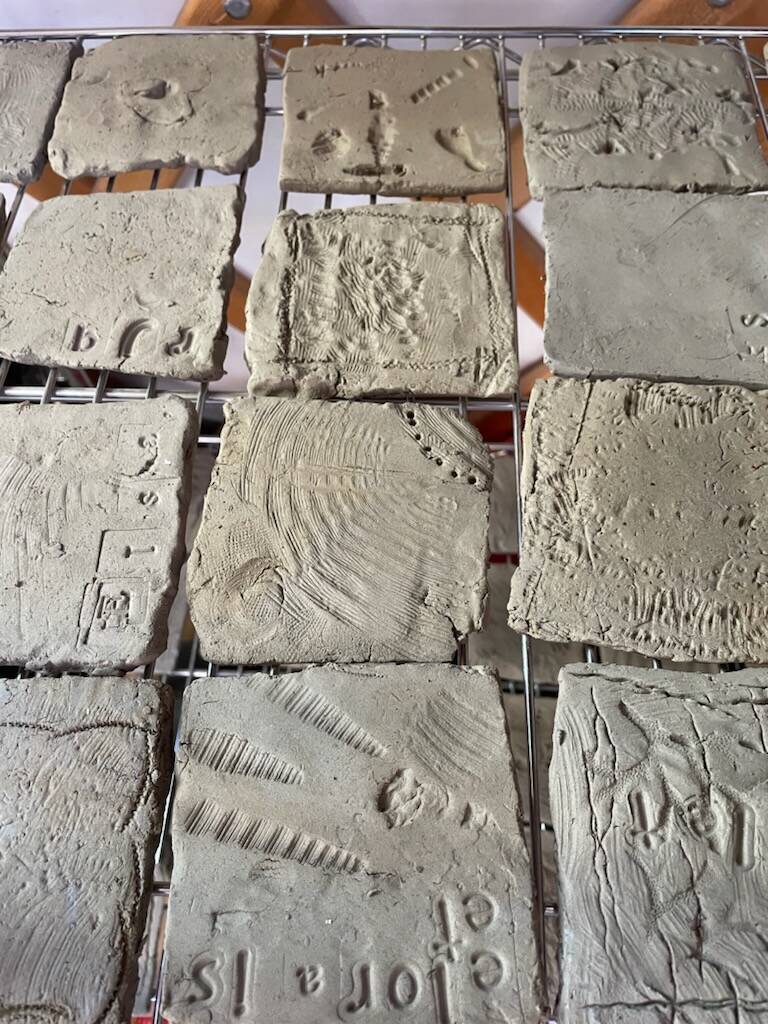David Kauffman joined Homer’s Little Fireweed Academy last week for an Artist in the Schools residency.
The weeklong program, held Feb. 20-24, was a blend of art and science, with students in kindergarten to second grade collecting natural objects from the beach for their art project.
On the first day of the project, Feb. 20, students headed out on a local field trip to the bluffs just north of Bishop’s Beach to collect the natural Kachemak Bay beach clay. The students collected 220 pounds of beach clay and carried it back to the classroom laboratory.
“For this local clay, we set up a tile factory,” Kauffman said.
Students were organized at different stations processing the clay collected from the beach and then used different things they found on the beach to decorate their tiles, he said.
“I had them pick up these ‘chalk rocks’ from the beach, too, because it looks very similar to the fired clay and what we do by firing is kind of like what the earth does by geology,” Kauffman said on Friday, as he waited for the final group of kids to join for the day.
Kauffman has been crafting with pottery for about 25 years. He began work as a full-time potter when he moved to Homer in 2014 and worked as a teacher previously.
During his lesson last Friday, Kauffman showed his second graders some of the pieces he makes and sells. He explained that the clay he uses in his pottery doesn’t come from the beach. Instead, he buys clay to create his pieces.
“What do you guys think looks different about these pieces from the fired beach clay?” he asked the students.
Some of the things the second graders noticed — a smoother texture and different colors. Kauffman discussed the process of glazing and why there is no glaze on the bottoms of the pieces. He also explained differences and similarities between beach clay and processed clay.
On the same day, teacher Mo Wilkinson also prompted the group to think about how the pieces were made.
“Do you think he made those the same way we made our pinch pots or do you think he did it a different way?”
“He used the spin-machine!” one student responded.
Kauffman then explained the mechanics of a pottery wheel to the students.
“You put the clay on the wheel and you can shape it as it’s spinning, kind of the same way we used our hands to turn our pots as we crafted them. The wheel does that for you. That’s the way that you make things that turn out to have a round shape,” he explained.
When finished, students’ work was baked in a kiln.
Students will have an opportunity to share their projects with families and the community on Thursday, March 2, from 1-2 p.m. in the yurt behind Little Fireweed.
Emilie Springer can be reached at emilie.springer@homernews.com


